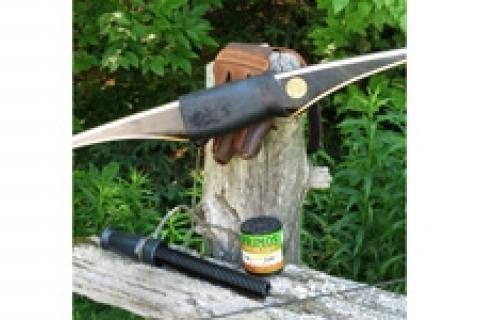
 I love sitting in treestands and commercial ground blinds. But when I'm using my longbow, I mostly still-hunt.
I love sitting in treestands and commercial ground blinds. But when I'm using my longbow, I mostly still-hunt.
That's primarily because I find I have a limited range of movement when using a longbow in many treestands, especially those with a surrounding rails — the same applies in most pop-up blinds. But it is also because I love the simplicity of slipping through the woods with a bow in hand.
Still-hunting isn't as hard as we make it out to be. But some basic principles apply. Essentially, you need to keep the wind in your favor; move slower than molasses; stick to the shadows; utilize cover; and use your eyes and ears far more than your feet. That's pretty well the standard advice.
But I'd add one other thing: use a deer call.
These amazing little tools have served me well on many still-hunts. Again, there are a few dos and don'ts. First, use it sparingly as you slip through the woods. When calling blindly, about every 15 minutes or so works for me. If calling to a deer you have seen in the distance, however, call sparingly until it starts coming.
Once you have finished a calling sequence, put the call away and nock an arrow. My experience is that if something is going to happen, it's going to happen fairly quickly; you don't want to be caught fumbling when a deer is coming in. Watch upwind for a deer's approach but also look for deer circling downwind — they often do this if they are unsure.
Never attempt to call unless you are behind relatively good concealment either. Any deer coming in is looking for the source of the noise, so your success will depend on how well you hide. The cover you hide in or behind shouldn't be so thick that it prevents you from shooting, but it should definitely add to your concealment — I often just crouch behind a boulder or uprooted tree or just lean into the far side of a mature tree trunk.
When a deer is approaching, prepare yourself mentally and physically for the shot. The physical part is obvious: Pick up your bow, nock an arrow, get in a comfortable shooting stance — but the mental part is a bit more complicated. Choose a shooting lane based on its route of approach; remind yourself to aim at a very specific spot on the animal' remind yourself of how different shot angles change point of aim; and have a plan to draw when the animal's view of you is obstructed. Try to keep your heart rate and breathing normal as it approaches. I find that going through this mental check list and reminding myself that I have practiced for this countless times, helps me focus on making a good shot.
Still hunting and deer calling is a great combination that has worked well for me in both rifle and bow seasons. Try it this season and you might never want to sit and wait for deer again.
- 3939 views

